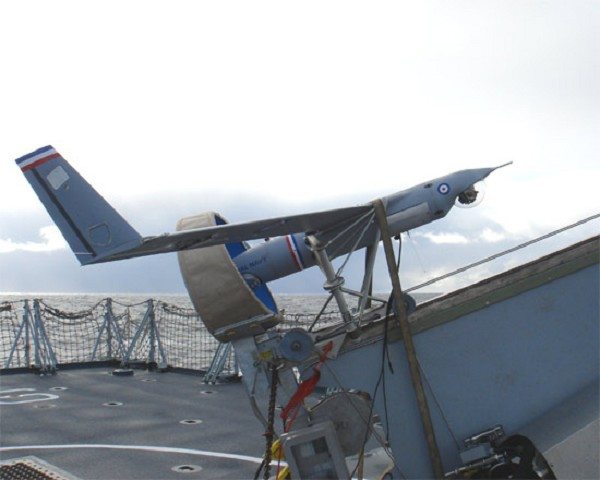The 11th UAS Warfighter Forum is an opportunity for attendees to confer openly and discuss issues to identify what the Army has done right, what it can improve, and encourages the free flow of ideas, all in support of the Soldier.
“This forum is focused on increasing the effectiveness and efficiency and the actual employment of UAS (unmanned aerial systems),” said Tim Owings, deputy project manager for UAS. “It’s a very unique venue in that we bring together active warfighter, National Guardsmen, acquisition professionals, other government agency professionals and our original equipment manufacturers to have this open dialogue and exchange of information. A lot of good information has come out of this.”
Sgt. Maj. Loren Gray, operations and force design director from Fort Rucker, Ala., and first time attendee, said the most-value added aspect of attending the forum was the opportunity to learn how each organization affects other organizations and its people.
“Sometimes it is easy to get caught up in your own mission that you forget the ramifications of a decision that your organization has made,” he said. Because Gray manages personnel, his main concern with the explosive growth of UAS is how it affects people.
“How does that widget affect the Army? Are there enough trainers and equipment to support the training mission? How does it all sync?” Gray said. “That’s why I’m so glad we’re all able to talk to one another and meet face-to-face in the same place at one time which has really helped to support my organization’s own mission.”
Attendees included UAS operators from 19 units including Army National Guard and Marine Corps representatives, 20 Army and Defense Department organizations, four other government agencies, and five of the UAS project office original equipment manufacturers.
During his keynote speech, Maj. Gen. Tim Crosby, program executive officer aviation called UAS “revolutionary.”
“We’re not buying anything new except for UAS,” he said. The way the Army thinks, fights, and engages with the enemy have evolved since the inception of UAS and has made the Army even more efficient and effective.
“What I’m really proud of is that they brought UAS and put them back under PEO Aviation that allows that synergy across all platforms,” Crosby said. He elaborated on the efficiencies brought on by the teaming of manned and unmanned aircraft that is driving the way the Army fights. “There are so many aspects and potential that this team deserves all the credit and has enabled this great thing to happen.”
Owings shared some highlights in the past year, including the Common Systems Integration Product Office, which is leading the efforts for the Manned-Unmanned Systems Integration Capabilities exercise scheduled on Sept. 6, 2011, at Dugway Proving Ground in Utah.
They’ve successfully completed ROVER-6 design verification tests with National Safety Agency oversight. The ROVER 6 is the next generation of ROVER portable radios that transforms sensor-to-shooter networking and allows increased levels of collaboration and interoperability.
In addition, the office is also supporting the Kiowa Warrior Product Office with their Level 2 Manned-Unmanned integration, or L2MUM “which means that the pilots in the cockpit can view feeds from nearby unmanned aircraft systems in real time.
In April 2011, construction was completed for the new Hunter and Warrior hangars at the Rapid Integration and Acceptance Center Dugway Proving Ground, Utah. Since its groundbreaking ceremony in October 2009, the RIAC has supported numerous off-axis test events, some of which include the Heterogeneous Airborne Reconnaissance Team system or HART.
HART enables Soldiers to collect video from aircraft and display it on their mobile computing devices — damage tolerance test of the Shadow which proved the aircraft’s capability in flight even after portions of the wing was blown off; Hellfire tests from the Gray Eagle, and many others.
In May 2011, the Army became the first service authorized to begin night flights of a unmanned aerial vehicle, or UAV. The Army’s first flight was with the Gray Eagle using the Ground-Based Sense and Avoid System at El Mirage, Calif.
Under a certificate of authorization with the U.S. Federal Aviation Administration, the project office, in coordination with the FAA, the Army Airworthiness Authority and General Atomics, has collected significant data from the flights which will be another great step for Army UAS to fly in national airspace.
“We continue to fly at a very high optempo (operational tempo) with over 1.2 million flight hours, 90 percent of those continue to be in combat operations,” said Owings. “The major points for all of this is that the demand for UAS is continuing to increase whether we’re talking additional ISR (intelligence, surveillance and reconnaissance) roles or in attack missions but really across the spectrum we’re seeing increasing uses of systems”
“The technologies for the next generation of stuff are starting to come to fruition and allow us to advance ourselves into things like 4G networks, smart phones and lower cost ways of producing end product to dislocated users,” he said.
In addition, as the Army continues to train more Soldiers, they are also learning a lot about these systems and are very open in the exchange of information to make them better.
“For us, the Army has come a long way for UAS but it is still in its infancy in terms of what’s going to be happening over the course of the next few years,” said Owings.
Crosby encouraged the audience to take advantage of the opportunity to learn from representatives in other services and organizations. “What we’re talking about is that bond of trust,” he said. “Learn from your brothers in the other services and build on those synergies to make these systems better.”










